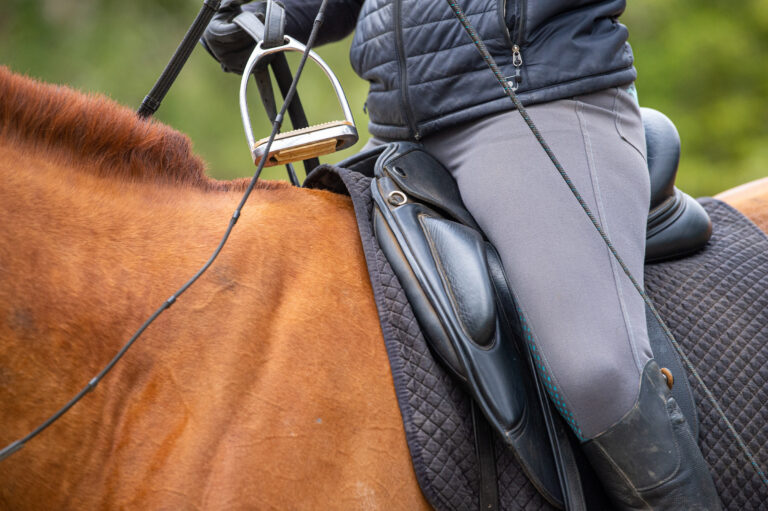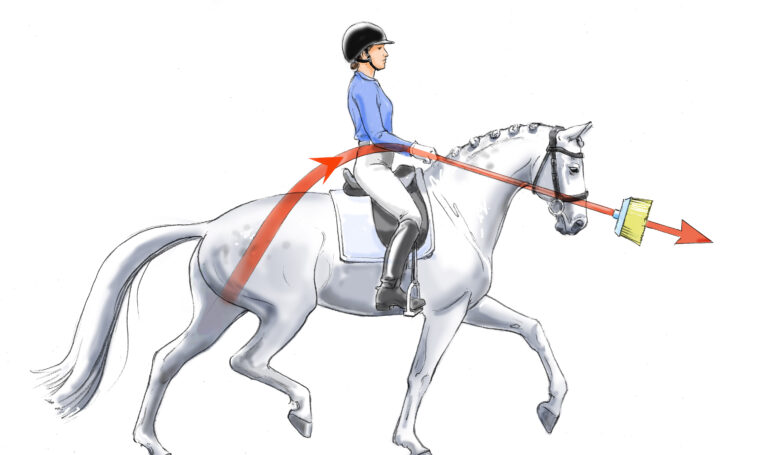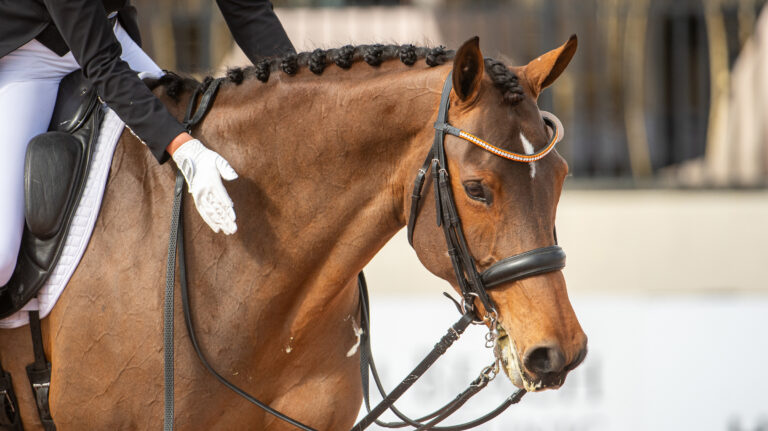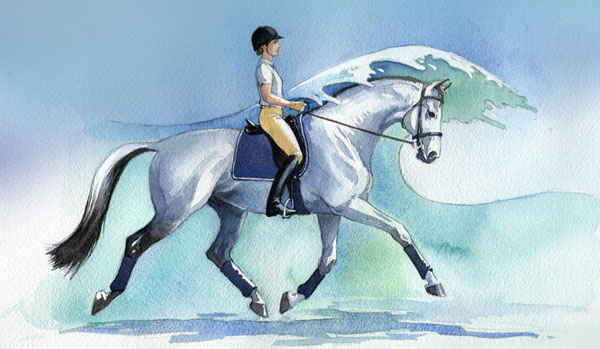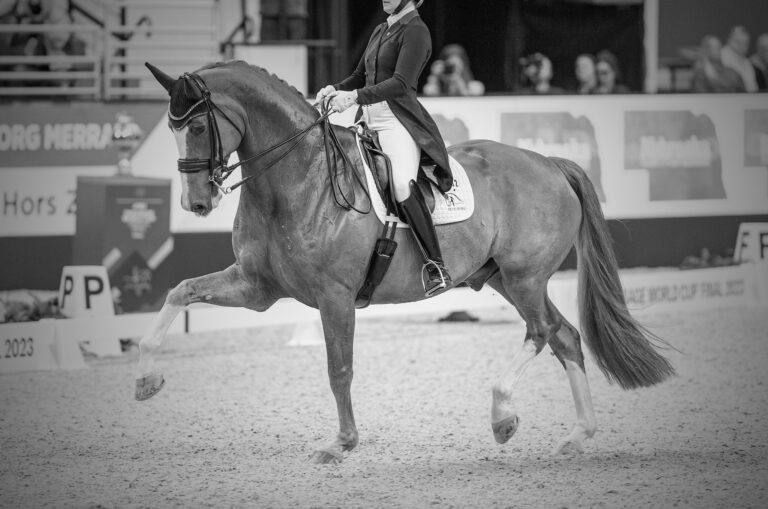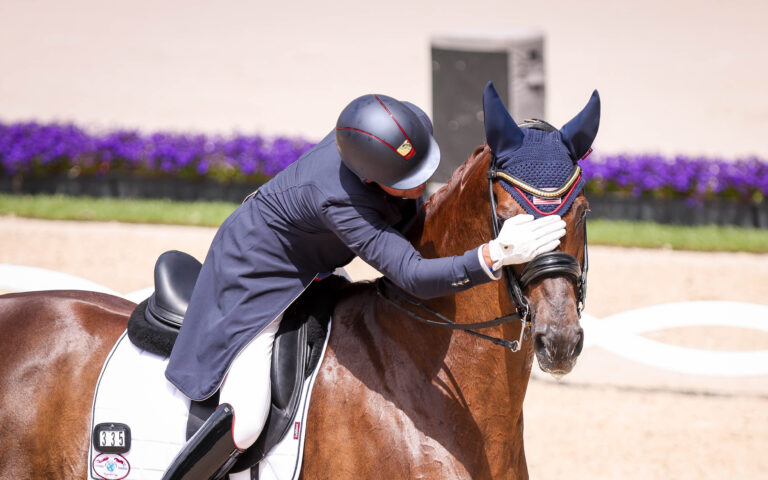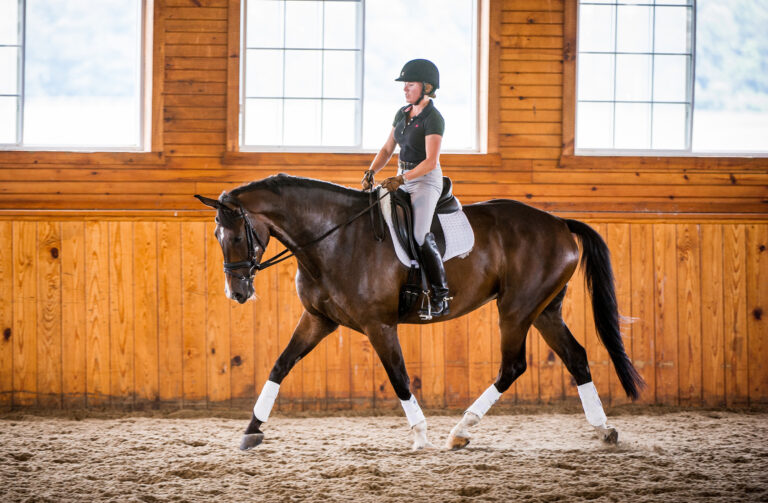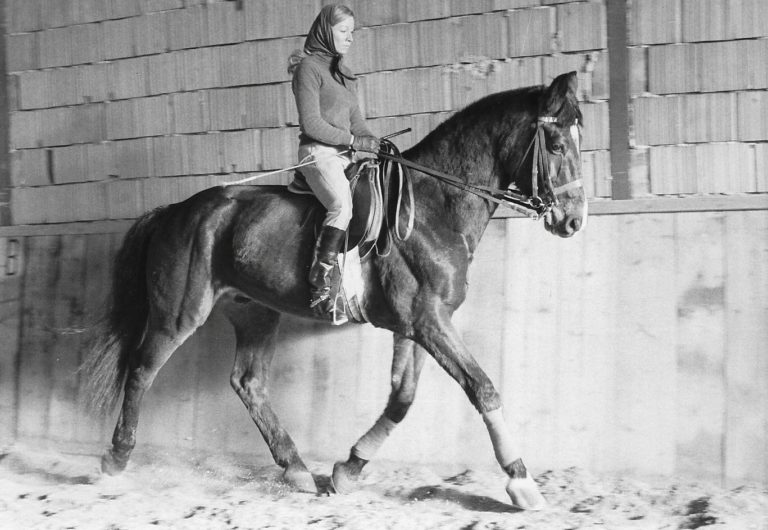Q: Every time I give a canter aid, my horse goes croup-in into the canter. Is this appropriate or is this a problem?
A:
The problem you are having is a common one. It means that your horse is confusing the aid for a haunches-in with the aid to canter. The two aids can be similar and this can be a problem through the levels to Grand Prix. It is an indicator that your horse is lacking straightness. Eventually, this will trouble you when you begin teaching your horse to do flying changes, as these, too, will be crooked. It can be quite an expensive deduction from a judge in competition. With time spent getting your horse straighter from your inside leg to your outside rein, however, you can easily resolve the problem.
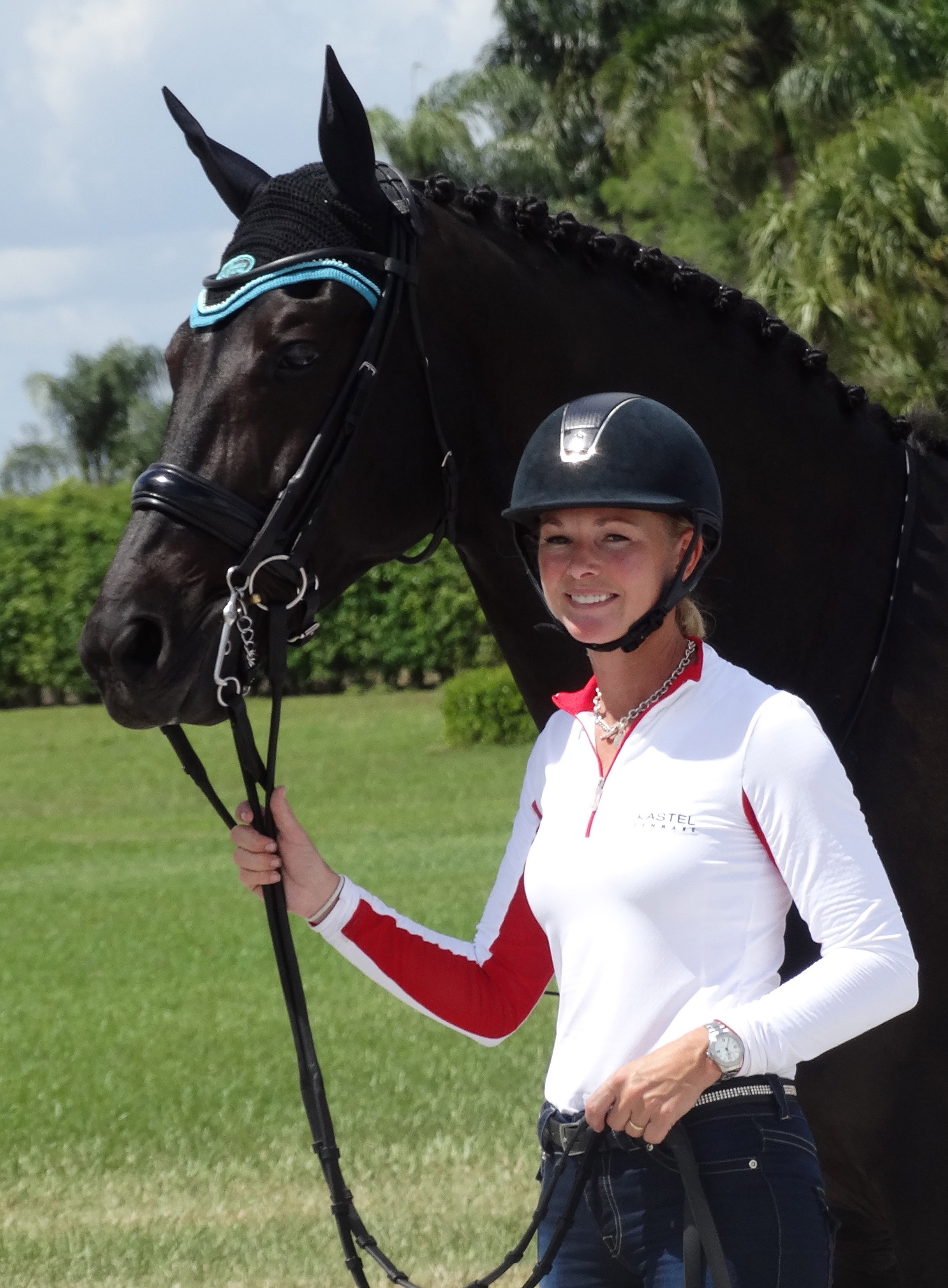
There are different ways to give the aid to canter. Some riders give the aid from the inside leg, and some more from the outside leg. I like to use a combination of both. If you use only your outside leg, the horse will naturally bring his haunches to the inside, as we teach our horses to yield from leg pressure. Before you can effectively use your outside leg for the canter strike-off, you must put your horse into a slight shoulder-fore position, where you ask the horse’s inside hind leg to step more under his center of gravity, causing him to become more balanced. Once you achieve a really good feeling that your horse is in shoulder-fore and is not pushing against your inside leg, you can give a quick aid with your outside leg to ask for the strike-off into the canter. At the same moment, make sure you half halt on your outside rein so the energy doesn’t run forward in the trot, but instead lifts up into the canter.
This outside leg aid should not be a slow, sliding leg aid (the sort that would ask for a haunches-in). Rather, it needs to be a quick aid, such as one you would use for a flying change. If, instead of cantering, your horse falls onto the forehand and brings his haunches in, you must immediately re-establish your shoulder-fore to cause him to be uphill and try again.
If you are always consistent with your aids when you practice, your horse should start to be straighter and more responsive. Then you should be able to eliminate the bad habit of your horse becoming croup-in and he will have a much easier time balancing in all his transitions because his inside hind leg will always be engaged.
Katherine Bateson-Chandler
has had multiple wins at both the Small Tour and Grand Prix and has enjoyed success with the support of Jane Forbes Clark, owner of Alcazar, Bateson-Chandler’s top current mount. She trains each summer in Europe with 2017 FEI World Cup finalist and 2012 Great Britain team gold medalist Carl Hester and competes internationally. Most recently, she helped the Dutta Corp. U.S. Dressage Team bring home the bronze at the 2017 FEI Nation’s Cup competition. She is based in Wellington, Florida.


